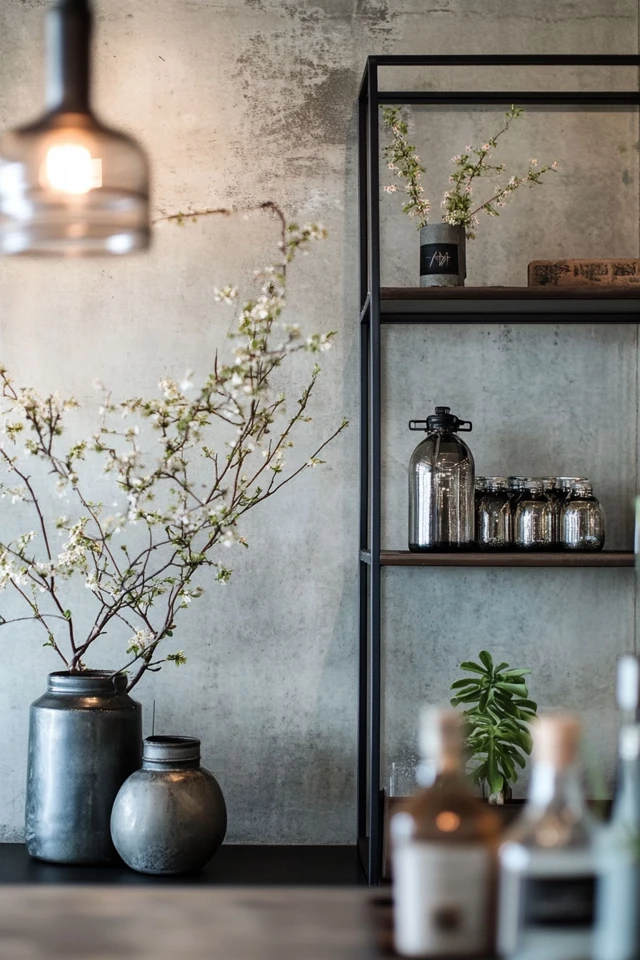Introduction
Industrial design has always been about embracing raw, utilitarian beauty—and metal accents are the backbone of this aesthetic. From exposed steel beams and sleek metal furniture to subtle metallic trims, incorporating metal into industrial spaces creates a cohesive and structured look that feels bold, modern, and timeless. Whether you’re working with a spacious loft or a small apartment, metal accents have the power to frame your industrial space, providing definition and a polished edge.
I remember the first time I visited an industrial-themed café that used metal in the most stunning ways. Steel-framed glass dividers sectioned off cozy seating nooks, while black iron railings outlined the staircase. Even the shelves, adorned with brass brackets, tied the entire space together. It was then that I realized how metal accents could do more than just blend in—they could highlight and frame a space, giving it character and purpose. Inspired, I brought this concept home, and with just a few key metal details, my living room was transformed into a sophisticated industrial haven.
If you’re curious about how metal accents can elevate your industrial space, you’re in the right place. Let’s explore how to use metals like steel, iron, and brass to frame, highlight, and enhance your interiors.
Why Metal Accents Are Essential in Industrial Spaces
Metal accents are more than just decorative—they are foundational to the industrial design style. By their very nature, metals like steel, iron, and brass convey strength, durability, and raw beauty. These elements embody the essence of industrial design, which draws inspiration from old factories and warehouses.
Metal accents serve multiple purposes in an industrial space. They create structure, define boundaries, and add a layer of sophistication. For example, a steel-framed window transforms a plain wall into an architectural feature, while a metal-trimmed mirror adds depth and visual interest. Metal also acts as a unifying element, tying together other industrial staples like wood, concrete, and exposed brick.
Beyond their aesthetic appeal, metal accents are incredibly durable and versatile. They withstand the test of time, making them an excellent choice for high-traffic areas or functional furniture. Whether polished for a sleek modern look or aged for a rustic vibe, metal accents can adapt to any industrial design vision.
Why These Key Elements Work So Well Together
Exposed Materials
Metal’s raw and unfinished texture complements the roughness of other industrial elements, like brick walls and concrete floors. This balance creates a harmonious and cohesive aesthetic.
Framing and Definition
Metal is perfect for framing architectural features, such as windows, doorways, or shelving. These accents add structure and visual clarity to open-concept spaces often found in industrial designs.
Contrast and Balance
The cool, sleek finish of metal accents contrasts beautifully with warmer materials like reclaimed wood, leather, or textiles. This juxtaposition adds depth and prevents the space from feeling too cold or sterile.
Neutral Palette
Metal accents often come in neutral tones like black, gray, silver, and brass. These colors seamlessly blend with industrial design’s muted palette while adding a touch of elegance.
Evidence-Based Design
Research shows that well-defined spaces are easier to navigate and more visually pleasing. Metal accents provide the framing and definition needed to organize open layouts commonly found in industrial interiors.
How to Incorporate Metal Accents to Frame Industrial Spaces
Step 1: Highlight Architectural Features
- Frame large windows or glass walls with steel or black iron. This adds an industrial edge while emphasizing the natural light and open layout.
- Use metal-trimmed doors, like sliding barn doors or pivot doors, to create striking entry points.
Step 2: Use Metal Furniture
- Opt for furniture pieces with metal frames, such as coffee tables, dining chairs, or shelving units.
- Combine metal-framed furniture with other industrial materials, like wood or concrete, for a balanced look.
Step 3: Define Spaces with Metal Dividers
- Incorporate steel or iron dividers to separate living areas in open-concept layouts without blocking light or flow.
- Use perforated metal panels or wire mesh for a unique, semi-transparent partition.
Step 4: Add Metal Trim
- Enhance cabinetry, countertops, or mirrors with thin metal edging to give them an industrial flair.
- Install baseboards or crown molding with metallic finishes for subtle but impactful framing.
Step 5: Accessorize with Metal Details
- Use brass or steel drawer pulls, light fixtures, and curtain rods to add small but meaningful metal touches.
- Display metal art or sculptures to tie the room together.
Picture Gallery
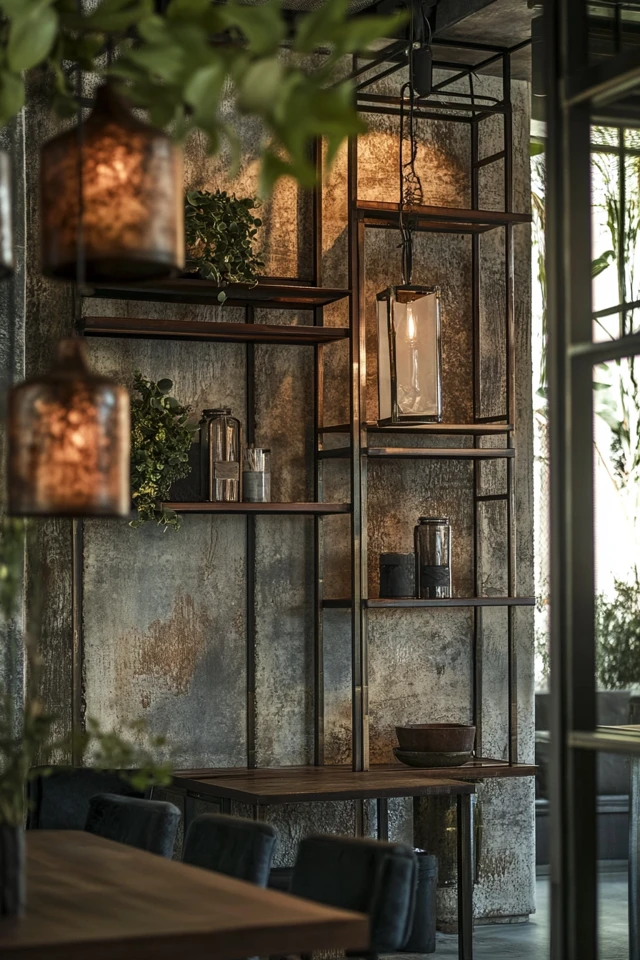
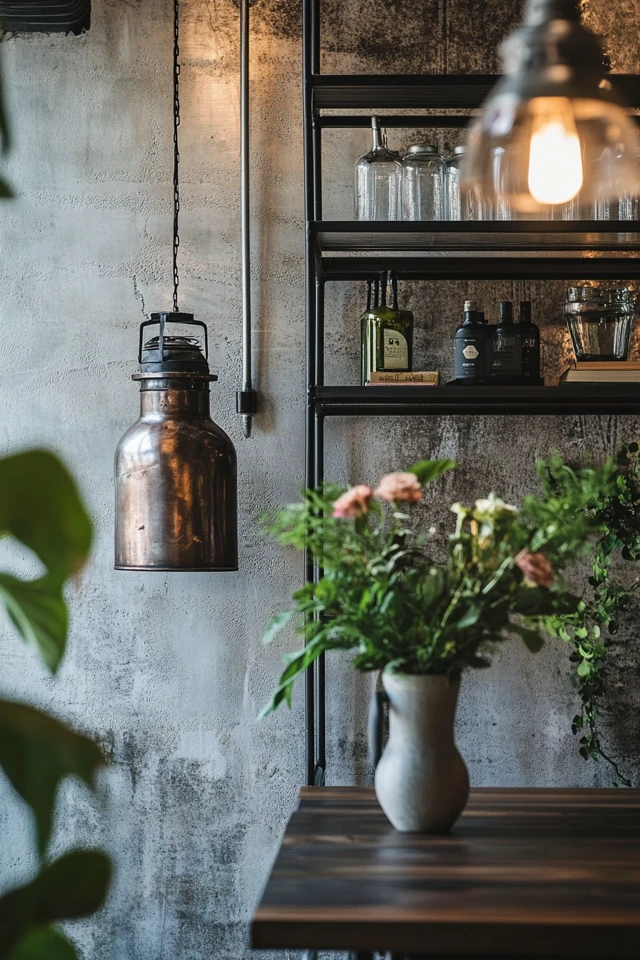
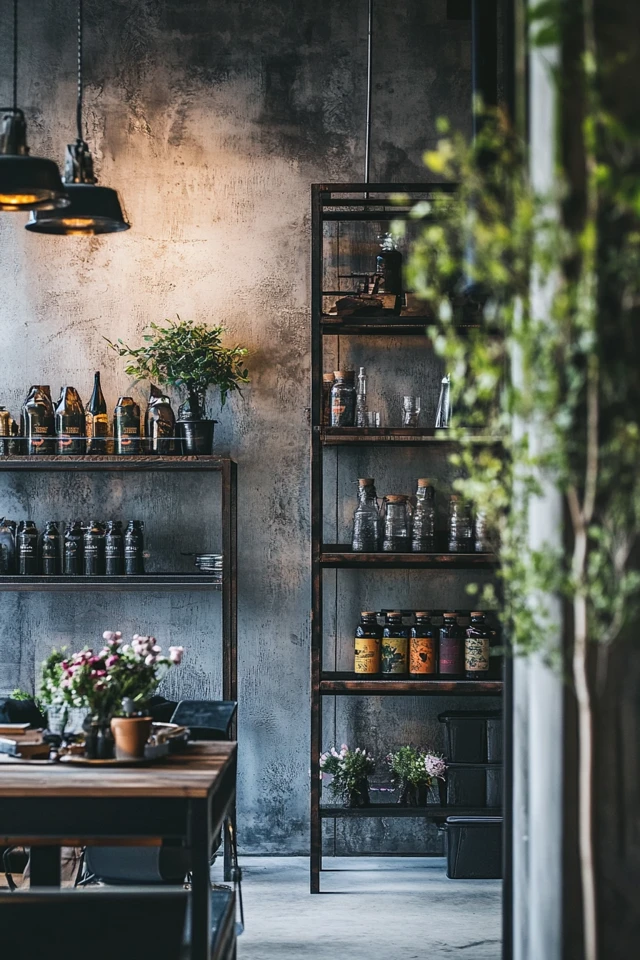
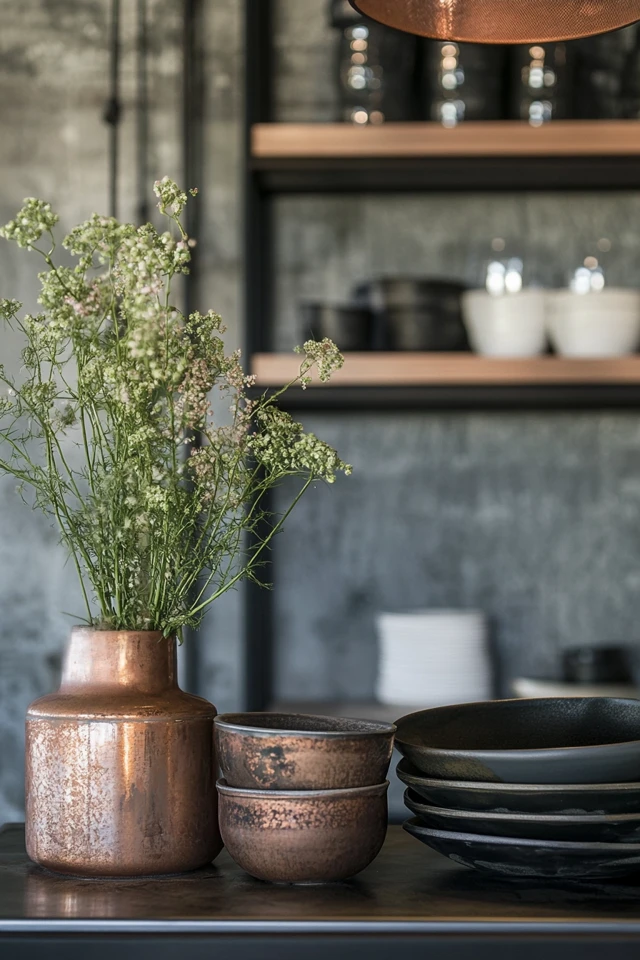
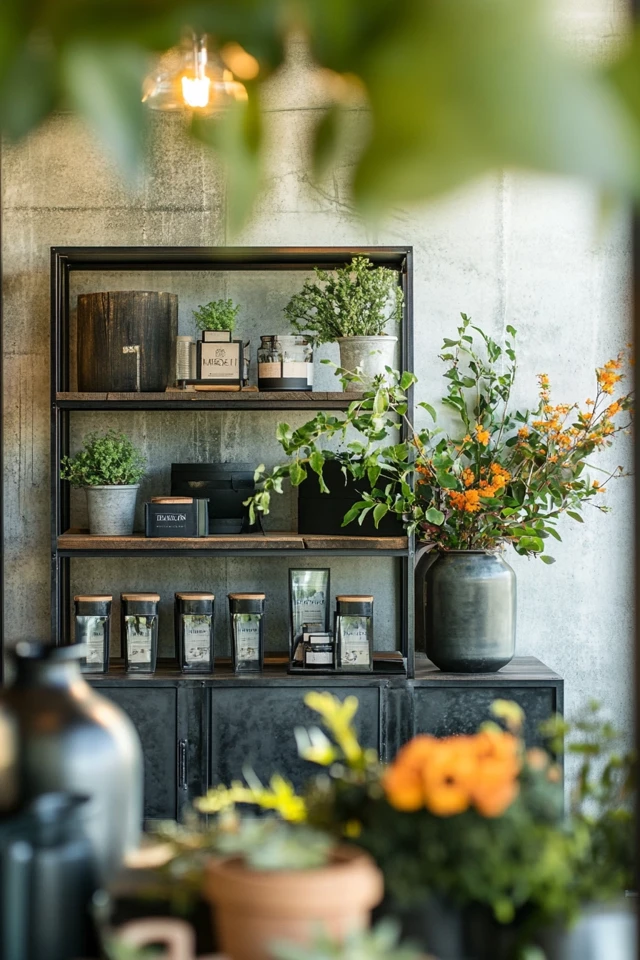
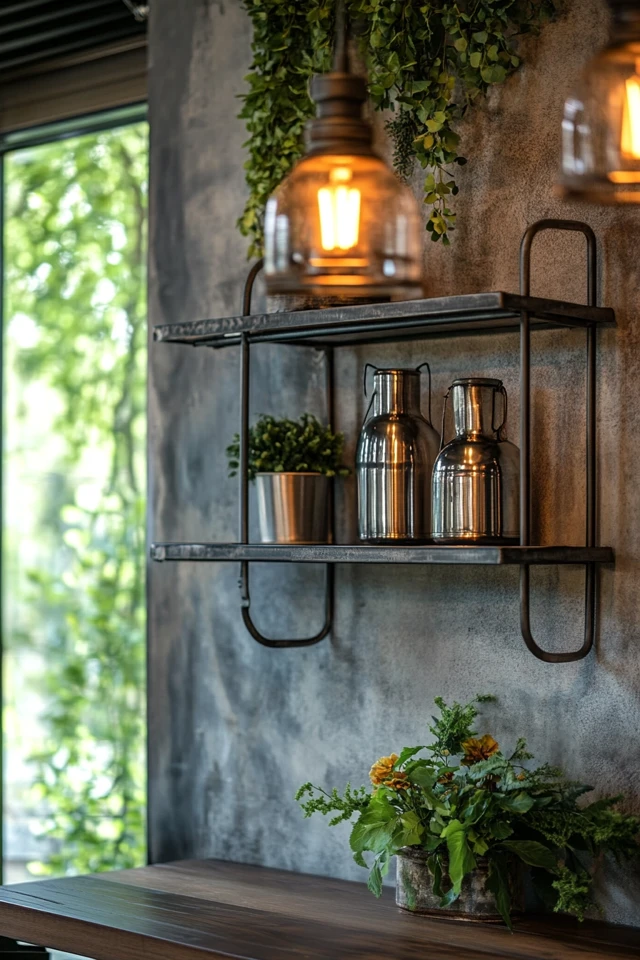
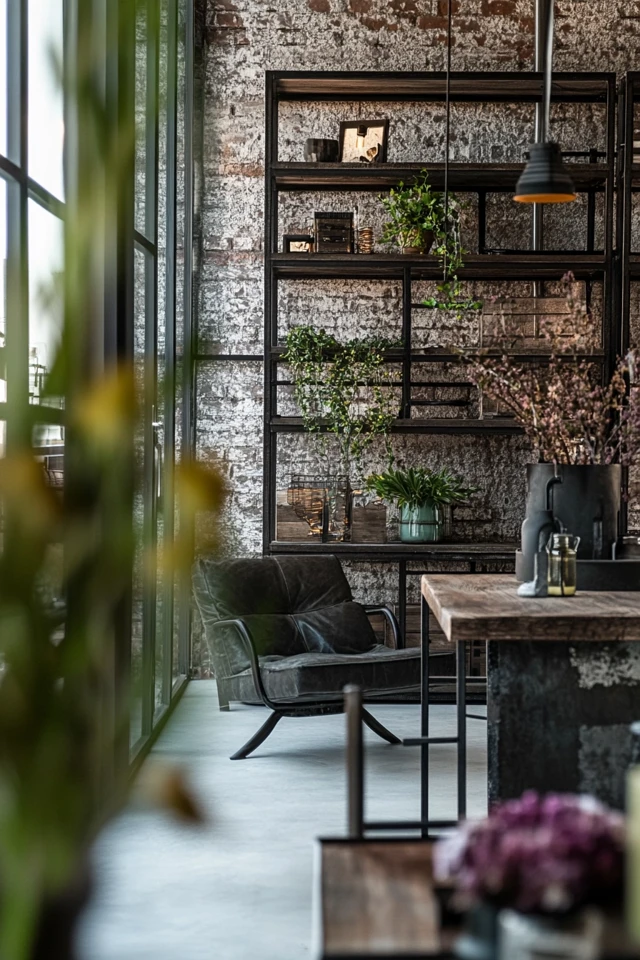

FAQ Section
1. What metals work best for industrial spaces?
Steel, iron, and brass are the most commonly used metals in industrial design. They offer durability and match the aesthetic beautifully.
2. How do I prevent metal accents from making a space feel cold?
Balance the coolness of metal with warmer elements, like wood furniture, leather textiles, and ambient lighting.
3. Can metal accents work in small spaces?
Absolutely! Use slim metal frames, like those on mirrors or shelving, to add structure without overwhelming the space.
4. What’s the best way to maintain metal accents?
Regularly clean with a soft cloth and avoid harsh chemicals. For aged finishes like brass, allow natural patina to develop for added character.
5. How can I mix different metals in one space?
Stick to two or three complementary finishes, such as black iron and brass, to create visual interest without clashing.
Variations
- Rustic Industrial: Opt for aged metal finishes and pair them with reclaimed wood for a cozy, vintage-inspired space.
- Modern Industrial: Use polished steel or chrome for a sleek, contemporary look.
- Glam Industrial: Incorporate brass or gold accents to add warmth and a touch of luxury to the industrial aesthetic.
How to Showcase It
Living Room
Frame large windows with black metal trims or add a metal-framed coffee table for a cohesive industrial look.
Kitchen
Install metal cabinet handles, steel shelving, or a brass-trimmed backsplash to elevate the space with functional yet stylish details.
Bedroom
Use a metal bed frame or add a metal-trimmed mirror to bring an industrial vibe to your sleeping space.
Office
Incorporate metal-framed desks, shelves, or lighting fixtures to create a workspace that’s both productive and chic.
Occasions to Feature It
- Renovation Reveals: Metal accents stand out beautifully in before-and-after transformations.
- Holiday Gatherings: Showcase the elegance of metal finishes with festive decor, like wreaths or string lights.
- Everyday Living: Enjoy the durability and timeless appeal of metal accents in your day-to-day space.
Conclusion
Metal accents are the unsung heroes of industrial spaces. They frame architectural features, define layouts, and add a layer of sophistication to the rugged industrial aesthetic. Whether you’re adding a steel-framed mirror, brass-edged cabinetry, or an iron room divider, metal accents are the perfect way to highlight and enhance your space.
Now it’s your turn—experiment with metal accents to frame your industrial space and create a look that’s both functional and stunning. Share your results and inspire others to embrace the industrial charm!

